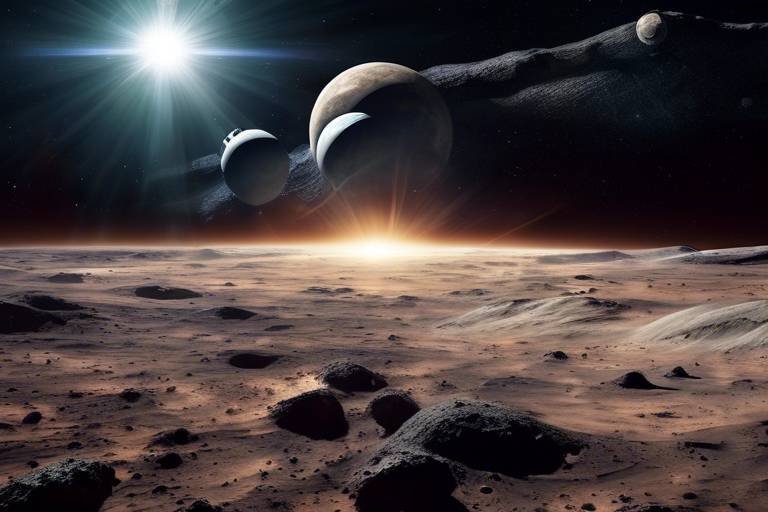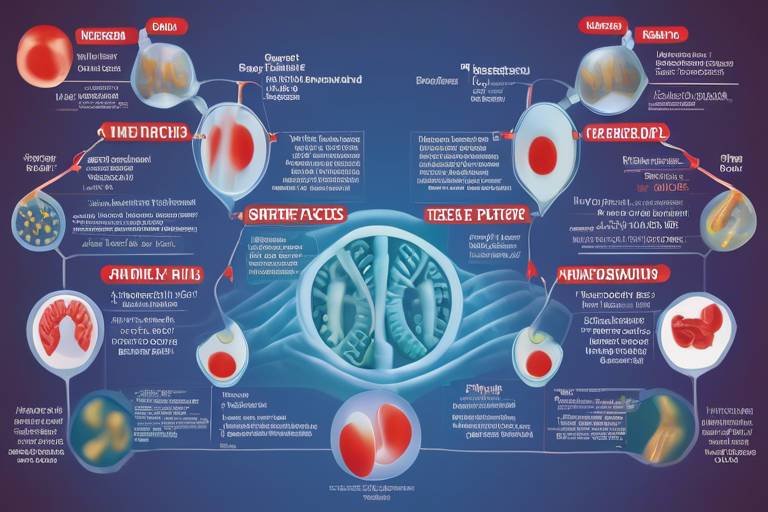Exploring the Impact of Space Exploration on Scientific Knowledge
Space exploration is not just about rockets and astronauts; it's a thrilling journey that has transformed our understanding of the universe and our place within it. From the moment humanity first gazed at the stars, the desire to explore beyond our planet has driven us to uncover mysteries that were once thought to be insurmountable. The impact of space exploration on scientific knowledge is profound, influencing various disciplines such as technology, biology, and physics. Imagine the excitement of discovering a new planet or understanding the fundamental forces that govern the cosmos! Each mission adds another piece to the puzzle of existence, expanding our horizons and challenging our perceptions.
In this article, we will delve into the historical context of space exploration, highlight the technological advancements spurred by space missions, and explore how these efforts have enhanced our understanding of the universe and Earth sciences. We'll also discuss the interdisciplinary collaborations that have emerged from these explorations, showcasing the collective effort of scientists and researchers worldwide. So, buckle up as we embark on this exhilarating journey through space and science!
Understanding the origins of space exploration provides insight into its evolution and significance in scientific advancement. It all began in the mid-20th century when the Space Race ignited a fierce competition between nations, leading to remarkable milestones that have shaped our current knowledge. From the launch of Sputnik in 1957 to the Apollo moon landings, each achievement has paved the way for further discoveries. These early missions not only showcased human ingenuity but also set the stage for international cooperation in space research.
One of the most exciting aspects of space exploration is its ability to drive technological advancements that have far-reaching applications. The challenges faced in space missions have led to innovations that impact our daily lives in ways we often take for granted. For instance, the development of materials that can withstand extreme conditions has found applications in various industries, from aerospace to medicine.
Satellites have revolutionized communication, weather forecasting, and navigation, showcasing the direct benefits of space exploration on everyday life. With a network of satellites orbiting our planet, we can connect with anyone across the globe in an instant, receive accurate weather updates, and navigate unfamiliar territories with ease. These advancements have not only improved our quality of life but also enhanced our ability to respond to natural disasters and environmental challenges.
The development of GPS technology is a prime example of how space exploration has transformed transportation and logistics. Originally designed for military use, GPS has become an integral part of civilian life, guiding us on road trips, helping delivery services optimize their routes, and even aiding emergency responders in reaching those in need. Without the advancements made through space missions, our modern world would be vastly different.
Earth observation satellites provide critical data for environmental monitoring, disaster response, and climate change studies. These satellites capture images and data that help scientists understand our planet's health, track changes in ecosystems, and develop strategies to combat climate change. The importance of space missions in addressing global challenges cannot be overstated; they serve as our eyes in the sky, providing invaluable insights into our changing world.
Research conducted in space has led to significant medical advancements, particularly in understanding human health and developing new treatments. For example, studying how the human body reacts to microgravity has provided insights into muscle atrophy and bone density loss, leading to improved therapies for patients on Earth. Furthermore, the technologies developed for space missions, such as advanced imaging systems, have found their way into medical diagnostics, enhancing our ability to detect and treat diseases.
Space exploration has deepened our understanding of the universe, leading to groundbreaking discoveries about black holes, dark matter, and the origins of the cosmos. Each mission, whether it be a rover on Mars or a telescope in orbit, contributes to our knowledge of the fundamental workings of the universe. The quest to understand our place in the cosmos is not just a scientific endeavor; it is a philosophical one that challenges us to ponder the very nature of existence.
Space-based telescopes have provided unprecedented views of the universe, allowing scientists to gather data that ground-based telescopes cannot achieve. By eliminating the distortions caused by Earth's atmosphere, these instruments have opened up new frontiers in our understanding of celestial phenomena. The images and data collected have led to astonishing discoveries, such as the detection of exoplanets and the observation of distant galaxies.
The search for exoplanets has expanded our understanding of potential life beyond Earth, influencing astrobiology and our perspective on life in the universe. As we identify new worlds that may harbor conditions suitable for life, the implications for humanity are profound. Are we alone in the universe? Space exploration is bringing us closer to answering this age-old question.
Space exploration has significantly contributed to Earth sciences, enhancing our understanding of geological processes, climate patterns, and natural disasters. The data collected from space missions informs our understanding of Earth's systems, aiding in resource management and disaster preparedness. This knowledge is crucial as we face increasing environmental challenges.
Satellite imagery is crucial for monitoring climate change, providing data that informs policy decisions and public awareness about environmental issues. By analyzing trends over time, scientists can better understand the impacts of climate change and advocate for necessary actions to protect our planet. The ability to visualize these changes from space adds urgency and clarity to the discussions surrounding climate action.
Space missions have enabled detailed geological surveys of Earth, aiding in resource management and disaster preparedness. By mapping geological features and monitoring tectonic activity, scientists can better predict natural disasters and manage resources more effectively. This knowledge is essential for ensuring the safety and sustainability of our communities.
Space exploration fosters collaboration across multiple scientific disciplines, leading to innovative research and comprehensive solutions to complex problems. The challenges of exploring space require expertise from various fields, including engineering, biology, and physics. This interdisciplinary approach not only enhances our understanding but also drives technological advancements that benefit society as a whole.
Collaborative efforts between space agencies and research institutions enhance knowledge sharing and resource pooling, driving advancements in science and technology. Such partnerships have resulted in successful missions and groundbreaking discoveries that would not have been possible in isolation. The spirit of collaboration is essential for tackling the challenges of space exploration and advancing our scientific knowledge.
International partnerships in space exploration promote global cooperation and shared scientific goals, emphasizing the universal nature of scientific inquiry. By working together, nations can pool their resources and expertise to tackle the challenges of space exploration, fostering a sense of unity and shared purpose that transcends borders.
- What are the main benefits of space exploration? Space exploration drives technological advancements, enhances our understanding of the universe, and contributes to various scientific fields, including medicine and environmental science.
- How has space exploration impacted everyday life? Technologies developed for space missions, such as GPS and satellite communications, have transformed transportation, logistics, and communication.
- What role do satellites play in climate monitoring? Satellites provide crucial data for tracking climate change, natural disasters, and environmental changes, informing policy decisions and public awareness.
- How do interdisciplinary collaborations benefit space research? Collaborations between different scientific disciplines foster innovation and lead to comprehensive solutions for complex problems associated with space exploration.

The Historical Context of Space Exploration
Space exploration is not just a modern endeavor; it is a journey that stretches back several decades, capturing the imagination of humanity. The origins of this quest can be traced to the mid-20th century, a time when the world was embroiled in the Cold War, and technological competition was at its peak. The launch of Sputnik 1 by the Soviet Union in 1957 marked a pivotal moment in history, igniting the "space race" and prompting nations to invest heavily in space technology and research.
Following Sputnik, the United States rapidly escalated its efforts, leading to the establishment of NASA in 1958. This agency became the cornerstone of American space exploration, guiding missions that would eventually take humans to the Moon. The historic Apollo 11 mission in 1969, where Neil Armstrong took his first steps on the lunar surface, is often regarded as the zenith of space exploration, showcasing not only human ingenuity but also the collaborative spirit that drives scientific advancement.
Throughout the decades, numerous milestones have shaped our understanding of space. Here are some key events:
- 1958: NASA is established.
- 1961: Yuri Gagarin becomes the first human in space.
- 1969: Apollo 11 lands on the Moon.
- 1981: The first Space Shuttle, Columbia, is launched.
- 1990: Hubble Space Telescope is deployed, providing breathtaking images of the universe.
These milestones not only highlight the technological advancements achieved but also reflect the evolving understanding of our place in the universe. As we explored beyond our planet, we began to grasp the vastness of space and the complexities of celestial bodies. The development of various space missions has been instrumental in bridging gaps in scientific knowledge across disciplines such as physics, biology, and environmental science.
Moreover, the historical context of space exploration reveals the importance of international collaboration. The formation of partnerships, such as the International Space Station (ISS) in 1998, brought together space agencies from around the globe, fostering a spirit of unity and shared purpose. This collaboration has allowed scientists to conduct experiments in microgravity, leading to groundbreaking discoveries that benefit humanity as a whole.
In conclusion, the historical context of space exploration is rich with achievements that have profoundly impacted our scientific understanding. From the early days of the space race to the collaborative efforts of today, each step taken into the cosmos has opened new doors of knowledge and innovation. As we look to the future, it is essential to recognize how far we have come, while remaining excited about the discoveries that still await us among the stars.
Q: What was the first artificial satellite launched into space?
A: The first artificial satellite was Sputnik 1, launched by the Soviet Union on October 4, 1957.
Q: When did humans first land on the Moon?
A: Humans first landed on the Moon during the Apollo 11 mission on July 20, 1969.
Q: What is the International Space Station (ISS)?
A: The ISS is a habitable space station that serves as a laboratory for scientific research, built through collaboration between multiple countries, including the USA, Russia, Europe, Japan, and Canada.
Q: How has space exploration contributed to technology on Earth?
A: Space exploration has led to numerous technological advancements, including improvements in telecommunications, weather forecasting, and medical technologies.
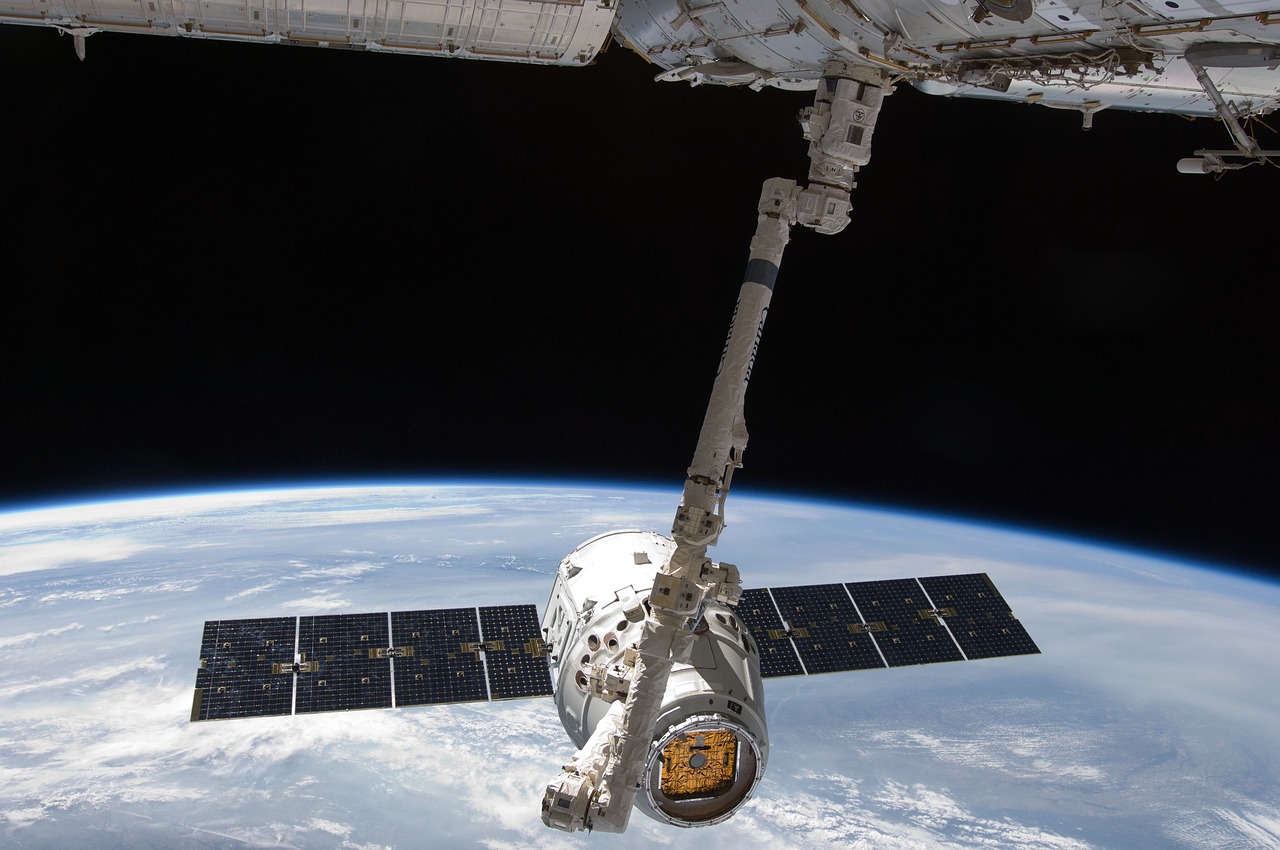
Technological Advancements Driven by Space Missions
When we think about space exploration, we often imagine astronauts floating in zero gravity or rovers traversing the Martian landscape. However, the true impact of these missions goes far beyond the stars. Space exploration has been a powerful catalyst for technological advancements that have transformed our daily lives in ways we might not even realize. From telecommunications to materials science, the innovations born out of our quest to explore the cosmos have reshaped numerous fields.
One of the most significant contributions of space missions is the development of satellite technology. Satellites have become an integral part of our infrastructure, enabling a plethora of applications that enhance our quality of life. For instance, they play a crucial role in:
- Communication: Satellites facilitate global communications, allowing us to connect with anyone, anywhere, at any time.
- Weather Forecasting: Accurate weather predictions rely on satellite data, helping us prepare for storms and other natural events.
- Navigation: GPS technology, derived from satellite advancements, has revolutionized how we navigate our world.
Speaking of GPS, let’s dive a bit deeper into how this technology has transformed transportation and logistics. Initially developed for military purposes, GPS has now become a household name, guiding us through our daily commutes, helping delivery services optimize routes, and even enabling emergency responders to find us in critical situations. It's hard to imagine a world without GPS, isn't it?
Moreover, Earth observation satellites have emerged as vital tools for monitoring our planet. These satellites gather essential data that informs us about environmental changes, disaster response strategies, and even climate change studies. For example, they can track deforestation, monitor ocean temperatures, and assess the impact of natural disasters, providing invaluable insights that help us protect our planet.
But the benefits of space exploration don’t stop there. The innovations in medical technology stemming from space research are nothing short of remarkable. For instance, the study of how the human body reacts to microgravity has led to advancements in various medical fields. Research conducted on the International Space Station (ISS) has contributed to the development of new treatments for conditions such as osteoporosis and muscle atrophy, showing us that the cosmos can indeed be a laboratory for improving human health.
As we continue to push the boundaries of our knowledge through space missions, the technological advancements we achieve will undoubtedly pave the way for even more innovations. The collaboration between scientists and engineers across disciplines ensures that the benefits of space exploration will echo throughout society, enhancing our lives in ways we are only beginning to understand.
In summary, the technological advancements driven by space missions are profound and far-reaching. From the way we communicate and navigate to our understanding of health and the environment, the influence of space exploration is a testament to human ingenuity and curiosity. As we look to the stars, we also find solutions to challenges right here on Earth, proving that the journey into space is, in many ways, a journey into the future.
- What are some everyday technologies that originated from space exploration?
Technologies like GPS, satellite TV, and weather forecasting systems all stem from advancements made through space missions. - How has space research contributed to medical advancements?
Research in microgravity has led to new treatments for various medical conditions, enhancing our understanding of human health. - Why are satellites important for climate monitoring?
Satellites provide critical data for tracking climate changes, helping inform policies and public awareness about environmental issues.

Satellite Technology and Its Applications
When we think about the wonders of modern technology, satellite technology often comes to mind as a silent yet powerful force driving advancements in various fields. From the moment the first artificial satellite, Sputnik, was launched into orbit in 1957, our ability to observe and interact with the world has been transformed dramatically. Satellites have become integral to our daily lives, providing essential services that many of us take for granted.
One of the most significant contributions of satellite technology is in the realm of communication. Satellites enable global connectivity, allowing people to communicate across vast distances instantly. Whether it's a phone call, video conferencing, or streaming services, satellites facilitate seamless communication, making the world feel smaller and more connected. This technology has not only changed personal interactions but has also revolutionized business operations, enabling companies to operate on a global scale.
Moreover, weather forecasting has seen a revolutionary change thanks to satellites. Equipped with advanced sensors, weather satellites continuously monitor atmospheric conditions, providing real-time data that meteorologists rely on to predict weather patterns accurately. This capability is crucial for disaster preparedness, as timely warnings can save lives and minimize property damage during natural disasters such as hurricanes and tornadoes.
Additionally, satellites play a pivotal role in navigation. The Global Positioning System (GPS), which many of us use daily, relies on a network of satellites to provide precise location data. This technology has transformed how we navigate our world, whether we are driving to a new location, hiking in the wilderness, or even just finding our way around a new city. The accuracy of GPS has also been a game-changer for industries like logistics and transportation, where timely deliveries are essential.
To further illustrate the profound impact of satellite technology, let's take a look at some key applications:
| Application | Description |
|---|---|
| Communication | Enables global connectivity through voice, video, and data transmission. |
| Weather Forecasting | Provides real-time atmospheric data for accurate weather predictions. |
| Navigation | Offers precise location tracking and directions through GPS technology. |
| Earth Observation | Monitors environmental changes, urban development, and natural disasters. |
Earth observation satellites are another fascinating application of satellite technology. They provide critical data that helps us monitor environmental changes, track urban development, and respond to natural disasters. For instance, during wildfires, satellites can detect hotspots and provide real-time information to firefighting teams, enhancing their response efforts. This capability is invaluable in a world where climate change and environmental degradation pose significant challenges.
In conclusion, the impact of satellite technology extends far beyond the realm of space exploration. It has woven itself into the fabric of our daily lives, influencing everything from how we communicate to how we understand and interact with our environment. As we continue to explore the cosmos, the advancements we make in satellite technology will undoubtedly pave the way for even more innovative applications that will benefit humanity in ways we can only begin to imagine.
- What is satellite technology? Satellite technology refers to the use of artificial satellites for various applications, including communication, navigation, weather forecasting, and earth observation.
- How do satellites communicate with Earth? Satellites communicate with Earth through radio waves, transmitting data to ground stations that process and distribute the information.
- What are the benefits of satellite technology? Satellite technology provides global connectivity, accurate weather predictions, precise navigation, and critical data for environmental monitoring.
- Can satellites be used for disaster management? Yes, satellites play a crucial role in disaster management by providing real-time data that helps authorities respond to emergencies effectively.

Global Positioning Systems (GPS)
The advent of is one of the most remarkable outcomes of space exploration, transforming the way we navigate our world. Imagine a time when finding your way required a paper map and a lot of guesswork. Now, with just a smartphone in hand, you can pinpoint your location anywhere on the globe within seconds. This technological marvel relies on a network of satellites orbiting Earth, continuously transmitting signals that allow GPS devices to calculate their precise location. But how does this work, and why is it so revolutionary?
GPS technology operates through a system of at least 24 satellites that communicate with ground-based receivers. When a GPS device receives signals from multiple satellites, it uses a method called trilateration to determine its exact position. The beauty of this system lies not only in its accuracy but also in its versatility. GPS is used in various applications, including:
- Navigation: From cars to airplanes, GPS enables efficient route planning and real-time tracking.
- Emergency Services: First responders can locate incidents quickly, improving response times and saving lives.
- Geocaching: This popular outdoor recreational activity relies on GPS for treasure hunting adventures.
- Fleet Management: Businesses can monitor their vehicles, optimizing routes and reducing fuel consumption.
Moreover, GPS has facilitated significant advancements in various sectors, including agriculture, where farmers use GPS for precision farming to maximize crop yields while minimizing resource use. In the realm of science, GPS technology is crucial for environmental monitoring and research, helping scientists track changes in ecosystems and study phenomena like earthquakes.
Interestingly, the impact of GPS extends beyond mere convenience; it has reshaped entire industries. For instance, logistics and transportation companies have integrated GPS into their operations, leading to more efficient supply chains and reduced operational costs. The ability to track shipments in real-time has revolutionized how businesses operate, creating a more interconnected world.
In conclusion, the development of GPS is a shining example of how space exploration has tangible benefits on Earth. It showcases the profound ways in which technology derived from space missions can enhance our daily lives, making navigation not only easier but also safer and more efficient. As we continue to explore the cosmos, who knows what other groundbreaking technologies await us?

Earth Observation Satellites
Earth observation satellites are among the most significant advancements in space exploration, providing us with a unique lens to view our planet from above. These technological marvels play a crucial role in monitoring environmental changes, managing natural resources, and enhancing disaster response efforts. By orbiting the Earth, they collect data that is invaluable for understanding our planet's dynamics and addressing pressing global challenges.
One of the most striking features of Earth observation satellites is their ability to capture high-resolution images of the Earth's surface. This capability allows scientists and researchers to analyze various phenomena, from urban development to deforestation, and even the impacts of climate change. For instance, satellites like Landsat have been instrumental in tracking land use changes over decades, providing a historical context that is essential for effective environmental management.
Moreover, these satellites provide critical data for weather forecasting, which is vital for agriculture, disaster preparedness, and daily life. By monitoring atmospheric conditions and changes, meteorologists can predict severe weather events, giving communities the chance to prepare and respond appropriately. This predictive capability can save lives and minimize property damage, highlighting the direct benefits of space exploration on our everyday lives.
In addition to weather monitoring, Earth observation satellites contribute significantly to climate studies. They offer insights into various climate indicators, such as temperature fluctuations, sea level rise, and greenhouse gas concentrations. For example, NASA's Global Precipitation Measurement (GPM) mission provides valuable data on rainfall patterns worldwide, which is critical for understanding water resources and managing floods.
To illustrate the impact of Earth observation satellites, consider the following table that summarizes some of their key applications:
| Application | Description |
|---|---|
| Environmental Monitoring | Tracking changes in land use, deforestation, and biodiversity loss. |
| Weather Forecasting | Providing real-time data for predicting weather patterns and severe weather events. |
| Disaster Response | Assessing damage from natural disasters and aiding in recovery efforts. |
| Climate Change Studies | Monitoring climate indicators and contributing to climate modeling efforts. |
| Agricultural Management | Analyzing crop health and optimizing resource usage for better yields. |
In conclusion, Earth observation satellites are not just technological achievements; they are essential tools that enhance our understanding of the planet. By providing critical data and insights, they empower scientists, policymakers, and the public to make informed decisions that impact our environment and future. As we continue to explore the cosmos, the knowledge gained from these satellites will remain a cornerstone of our efforts to protect and sustain our home planet.
- What are Earth observation satellites? Earth observation satellites are spacecraft designed to collect data about the Earth's surface, atmosphere, and oceans from orbit.
- How do Earth observation satellites help in disaster management? They provide real-time data that assists in assessing damage, planning evacuations, and coordinating relief efforts during natural disasters.
- Can Earth observation satellites monitor climate change? Yes, they collect critical data on climate indicators, helping scientists track changes and model future scenarios.
- What is the role of satellites in weather forecasting? Satellites gather atmospheric data that meteorologists use to predict weather patterns and severe weather events.
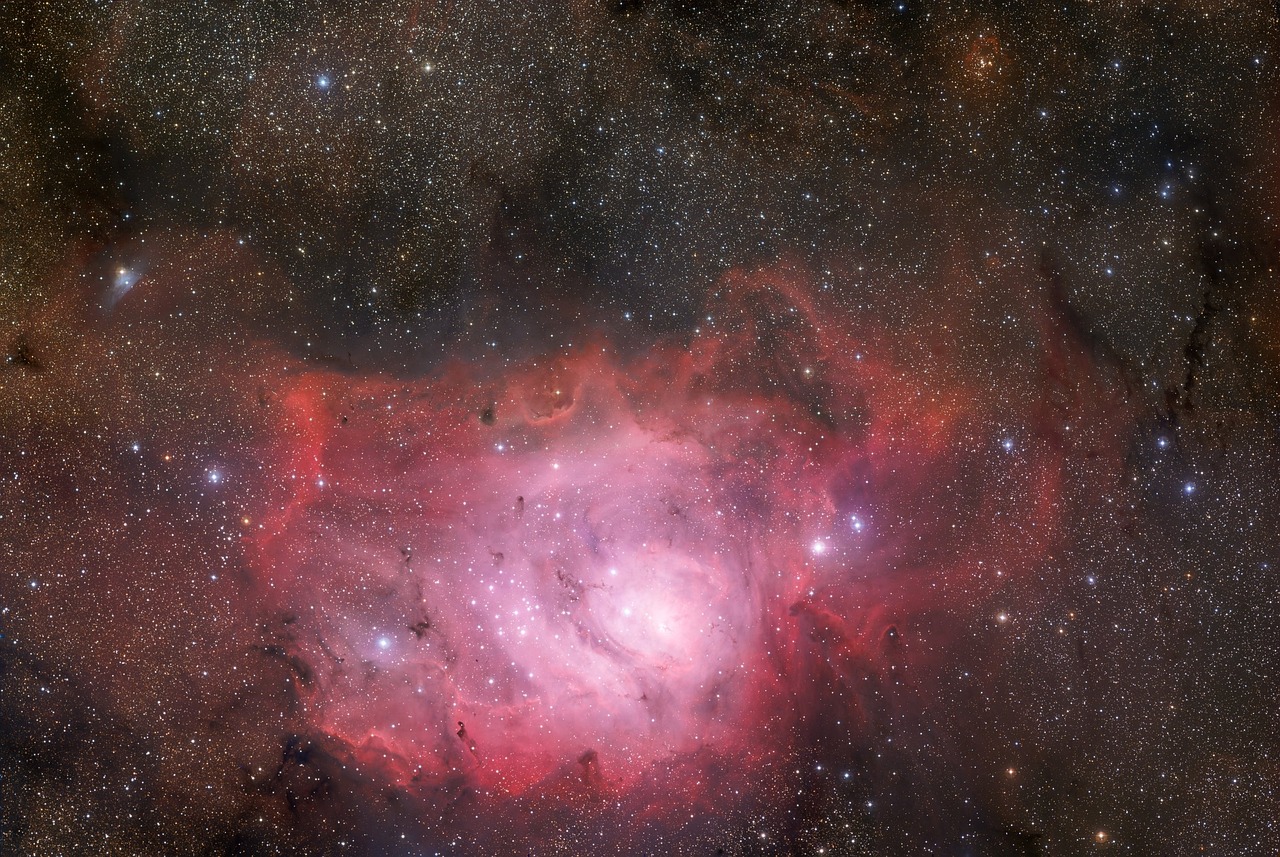
Medical Innovations from Space Research
When we think about space exploration, our minds often drift to the vastness of the universe and the thrill of discovering new worlds. However, what many people overlook is the profound impact that space research has had on medical advancements right here on Earth. The unique conditions of space, such as microgravity, have provided scientists with a rare opportunity to study human health and develop innovative treatments that would have been impossible to achieve otherwise.
One of the most significant contributions of space research to medicine is the understanding of how the human body reacts to long-duration spaceflight. Astronauts experience a range of physiological changes, including muscle atrophy and bone density loss. By studying these changes, researchers have been able to develop countermeasures that not only help astronauts maintain their health in space but also lead to breakthroughs in treating conditions like osteoporosis on Earth. For instance, exercise regimens and nutritional supplements designed for astronauts are now being adapted for elderly patients at risk of bone loss.
Moreover, the development of advanced imaging technologies, originally created for space missions, has revolutionized medical diagnostics. Techniques such as magnetic resonance imaging (MRI) and ultrasound have roots in technologies initially designed for exploring the cosmos. These imaging tools allow doctors to visualize internal structures of the body with incredible clarity, leading to earlier diagnoses and improved treatment plans.
Additionally, space research has spurred innovations in telemedicine. As astronauts are often far from medical facilities, the need for remote health monitoring has led to the creation of sophisticated telehealth systems. These systems enable doctors to monitor patients' vital signs from vast distances, a technology that has become invaluable in rural areas on Earth where access to healthcare is limited. With the integration of wearable technology, patients can now have their health data transmitted in real-time, allowing for timely interventions and personalized care.
Furthermore, the study of microgravity has opened up new avenues in drug development. For example, scientists have discovered that certain proteins crystallize more effectively in space, leading to the creation of more effective pharmaceuticals. This process enhances the understanding of drug interactions and can lead to more targeted therapies for diseases such as cancer. As researchers continue to explore the effects of microgravity on biological processes, we can expect even more groundbreaking medical innovations to emerge.
In summary, the intersection of space exploration and medical research is a shining example of how the quest for knowledge beyond our planet can yield incredible benefits for humanity. From enhancing our understanding of human health to developing new technologies that improve patient care, the innovations that arise from space research are a testament to the power of scientific inquiry. As we continue to push the boundaries of space exploration, we can only imagine the future medical breakthroughs that await us.
- How has space research improved medical technology? Space research has led to advancements in imaging technologies, telemedicine, and drug development, which have all significantly improved patient care.
- What are some medical conditions studied in space? Conditions like muscle atrophy, bone density loss, and cardiovascular changes are studied in astronauts to understand their effects and find treatments applicable to Earth.
- Can space research help with aging-related health issues? Yes, insights gained from studying the effects of microgravity on the human body are being used to develop treatments for aging-related conditions like osteoporosis.
- What is telemedicine and how did it evolve from space research? Telemedicine allows healthcare providers to monitor patients remotely, a necessity for astronauts. This technology has since been adapted for use in rural areas on Earth.

Understanding the Universe: Astrophysics and Cosmology
Space exploration has been a pivotal force in enhancing our understanding of the universe, particularly through the fields of astrophysics and cosmology. These scientific domains delve into the fundamental questions about the nature of the universe, its origin, and the intricate laws governing celestial bodies. Imagine standing under a clear night sky, gazing at the stars, and pondering the vastness of it all. What lies beyond? How did it all begin? These are the questions that drive scientists to explore the cosmos.
One of the most significant contributions of space exploration to our understanding of the universe is the discovery of black holes. These enigmatic regions in space, where gravity is so strong that nothing can escape, challenge our comprehension of physics. The study of black holes has opened new avenues in theoretical physics, pushing the boundaries of what we know about time, space, and the fundamental forces of nature.
Moreover, the exploration of dark matter and dark energy has revolutionized our understanding of the universe's composition. While ordinary matter makes up only about 5% of the universe, dark matter constitutes approximately 27%, and dark energy accounts for about 68%. This means that most of the universe is composed of things we cannot see or directly measure, which can be both thrilling and perplexing. The quest to understand these mysterious components is akin to piecing together a cosmic puzzle with missing pieces.
Space-based telescopes, such as the Hubble Space Telescope, have played a crucial role in this exploration. By capturing images and data from beyond Earth's atmosphere, these telescopes have provided unprecedented views of distant galaxies, nebulae, and other celestial phenomena. The clarity and depth of field that these instruments offer are simply unattainable from ground-based observatories. For instance, Hubble has helped astronomers determine the rate of expansion of the universe, leading to the realization that it is accelerating due to dark energy.
Furthermore, the search for exoplanets—planets located outside our solar system—has expanded our understanding of potential life beyond Earth. This area of research has significant implications for astrobiology, as scientists seek to identify planets that may harbor conditions suitable for life. The discovery of Earth-like exoplanets in the habitable zone of their stars has ignited excitement and curiosity about the possibility of extraterrestrial life. Imagine the thrill of finding a planet that could potentially host organisms similar to us!
In summary, the ongoing exploration of the universe through astrophysics and cosmology not only satisfies human curiosity but also fuels advancements in technology and our understanding of fundamental scientific principles. Each discovery brings us closer to answering the profound questions about our existence and the universe we inhabit.
- What is the difference between astrophysics and cosmology?
Astrophysics focuses on the physical properties and behavior of celestial objects, while cosmology studies the universe as a whole, including its origins and evolution. - How do space telescopes work?
Space telescopes operate outside Earth's atmosphere, allowing them to capture clearer images and data without atmospheric interference. - What is dark matter?
Dark matter is a form of matter that does not emit light or energy, making it invisible and detectable only through its gravitational effects on visible matter. - Are there other planets like Earth?
Yes, astronomers have discovered numerous exoplanets in the habitable zone of their stars, which may have conditions suitable for life.

The Role of Telescopes in Space Exploration
When we think about space exploration, one of the first images that come to mind is a telescope peering deep into the cosmos. These remarkable instruments have revolutionized our understanding of the universe, acting as our eyes in the sky. Ground-based telescopes, while valuable, are limited by Earth's atmosphere, which can distort and block the light from distant celestial objects. This is where space-based telescopes come into play, providing a crystal-clear view of the universe.
Space telescopes, such as the Hubble Space Telescope, have given us unprecedented insights into the cosmos. Launched in 1990, Hubble has captured stunning images of galaxies, nebulae, and other astronomical phenomena that were previously beyond our reach. Its ability to observe in various wavelengths—such as ultraviolet, visible, and near-infrared—has allowed astronomers to study the universe in ways that were once thought impossible.
But why are these telescopes so crucial for space exploration? Here are a few key reasons:
- Unobstructed Views: Space telescopes operate above the atmosphere, eliminating interference from air pollution, weather, and light pollution. This allows for clearer and more detailed observations.
- Wavelength Diversity: Different telescopes are designed to observe different wavelengths of light, from radio waves to gamma rays. This diversity enables scientists to gather a comprehensive understanding of various cosmic phenomena.
- Long-Term Observations: Space telescopes can continuously observe celestial objects over extended periods, leading to more accurate data collection and analysis.
Moreover, space telescopes have played a pivotal role in some of the most groundbreaking discoveries in astrophysics. For instance, they have been instrumental in identifying exoplanets, planets located outside our solar system, thus expanding our understanding of planetary systems and the potential for life beyond Earth. Telescopes like the Kepler Space Telescope have identified thousands of exoplanets, sparking curiosity and research into the conditions necessary for life.
In addition to exoplanet research, space telescopes have greatly enhanced our knowledge of black holes, dark matter, and the expansion of the universe. Observations of distant galaxies have provided evidence for the existence of dark energy, a mysterious force driving the universe's accelerated expansion. These findings not only challenge our understanding of physics but also invite us to rethink fundamental questions about the nature of the universe.
As we look to the future, the next generation of space telescopes, like the James Webb Space Telescope, promises to take our exploration to even greater heights. Designed to observe infrared light, JWST will allow scientists to look further back in time, observing the first galaxies formed after the Big Bang. This capability will provide insights into the early universe and the formation of stars and planets.
In summary, telescopes are not just tools; they are gateways to understanding the vast universe that surrounds us. Their ability to capture light from billions of light-years away allows us to unravel the mysteries of the cosmos, one observation at a time. As we continue to push the boundaries of space exploration, these instruments will remain at the forefront, guiding us through the dark and wondrous expanse of the universe.
- What is the main advantage of space telescopes over ground-based telescopes?
Space telescopes operate above the Earth's atmosphere, providing clearer images without atmospheric distortion. - How do telescopes help in the search for exoplanets?
Telescopes can detect the slight dimming of stars caused by planets passing in front of them, allowing scientists to identify and study exoplanets. - What are some famous space telescopes?
Some well-known space telescopes include the Hubble Space Telescope, Kepler Space Telescope, and the upcoming James Webb Space Telescope.

Exoplanet Research and Its Implications
Exoplanet research has surged in recent years, transforming our understanding of the cosmos and our place within it. With the discovery of thousands of exoplanets—planets that orbit stars outside our solar system—scientists are piecing together the puzzle of planetary systems and their potential for supporting life. This field of study is not just about counting planets; it's about exploring the very nature of existence beyond Earth. Imagine looking up at the night sky and realizing that each twinkling star might host a world teeming with possibilities. Isn't that a thrilling thought?
One of the most exciting implications of exoplanet research is the possibility of finding life beyond Earth. As we discover more about the conditions that allow planets to support life, we can refine our search criteria and develop more targeted missions to explore these distant worlds. For instance, researchers are particularly interested in the "Goldilocks Zone," the region around a star where conditions might be just right for liquid water to exist—an essential ingredient for life as we know it.
Moreover, the study of exoplanets has broader implications for our understanding of planetary formation and evolution. By analyzing the atmospheres and compositions of these distant worlds, scientists can learn about the processes that govern planetary systems, including our own. This knowledge can lead to significant advancements in fields such as astrophysics and geology, providing insights into how planets develop over time and how they might respond to various cosmic events.
To illustrate the impact of exoplanet research, consider the following:
- Technological Advancements: The tools and technologies developed for exoplanet research, such as advanced telescopes and spectrometers, have applications beyond astronomy. These innovations can enhance various fields, including materials science and telecommunications.
- Interdisciplinary Research: Exoplanet studies promote collaboration among astronomers, chemists, biologists, and geologists, leading to a more comprehensive understanding of life and planetary systems.
- Public Interest and Education: The excitement surrounding exoplanets fuels public interest in science and inspires the next generation of scientists, encouraging educational initiatives and outreach programs.
As we continue to explore the universe, the implications of exoplanet research extend far beyond the scientific community. It invites us to ponder profound questions about existence, the nature of life, and our role in the universe. Each discovery ignites our imagination and challenges us to consider what is possible. Are we alone in the universe, or are there countless other civilizations waiting to be discovered? The answers may lie in the stars, and with each new mission, we are one step closer to uncovering the mysteries that lie beyond our blue planet.
Q: What is an exoplanet?
A: An exoplanet is a planet that orbits a star outside our solar system. They can vary widely in size, composition, and distance from their host stars.
Q: How do scientists discover exoplanets?
A: Scientists use various methods to discover exoplanets, including the transit method, where they observe the dimming of a star's light as a planet passes in front of it, and the radial velocity method, which detects wobbles in a star's movement caused by the gravitational pull of an orbiting planet.
Q: Why is the search for exoplanets important?
A: The search for exoplanets is crucial for understanding the potential for life beyond Earth, the formation of planetary systems, and the conditions that support life. It also enhances our knowledge of the universe and our place within it.
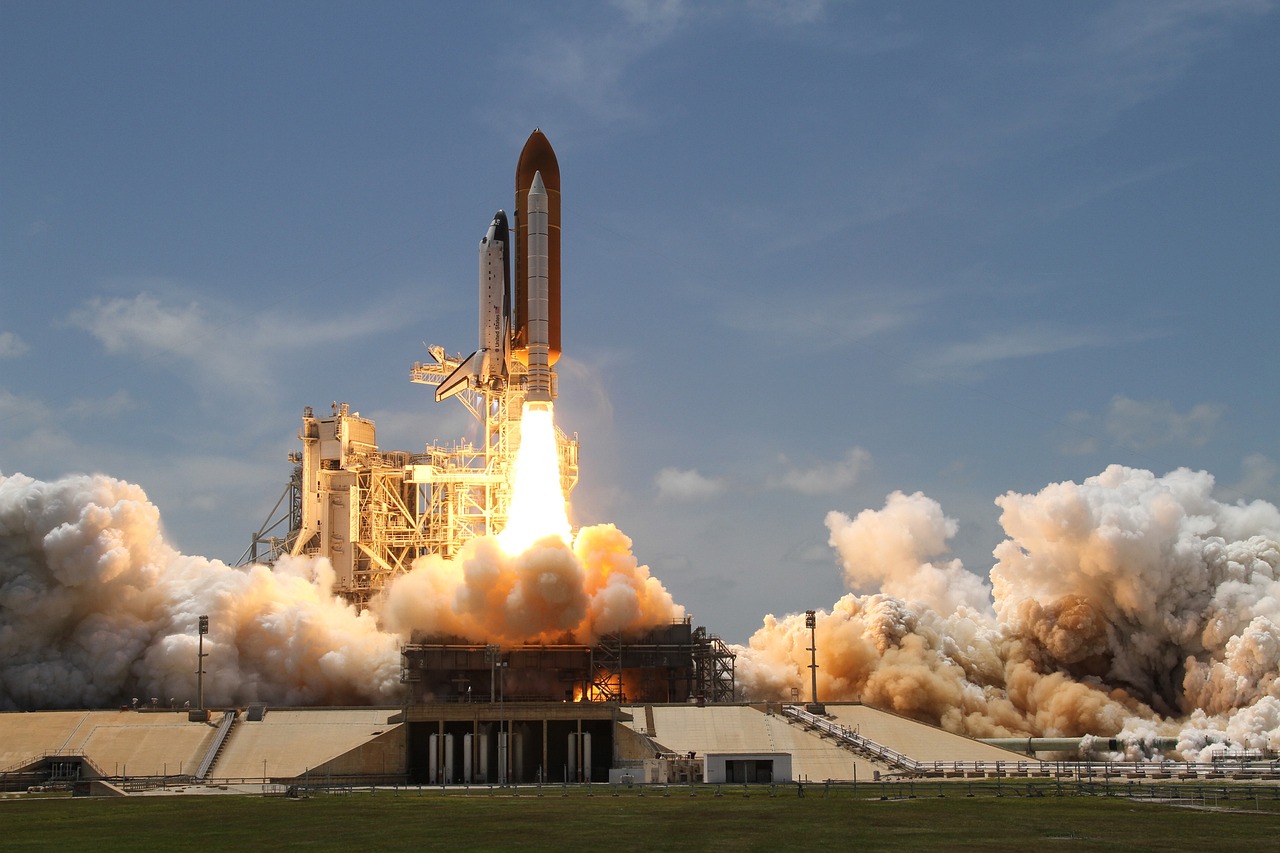
The Impact on Earth Sciences
Space exploration has significantly contributed to our understanding of Earth sciences, enhancing our grasp of geological processes, climate patterns, and natural disasters. By deploying satellites and conducting remote sensing, scientists have been able to gather critical data that was previously unattainable. This data not only aids in scientific research but also plays a vital role in practical applications that affect our daily lives.
One of the most profound impacts of space exploration on Earth sciences is the way it has transformed our understanding of climate change. Satellites equipped with advanced sensors continuously monitor various environmental parameters, including temperature, atmospheric gases, and ice cover. This real-time data collection allows researchers to observe trends and changes over time, providing insights that are crucial for developing effective climate policies.
For instance, NASA's Earth Observing System (EOS) has been instrumental in providing data that informs climate models. The information gathered helps scientists predict future climate scenarios and assess the potential impacts on ecosystems and human populations. Without these advancements, our understanding of climate dynamics would be severely limited.
Additionally, space missions have enabled detailed geological surveys that help us understand the Earth's structure and processes. For example, the Gravity Recovery and Climate Experiment (GRACE) mission has provided unprecedented insights into changes in Earth's gravity field, which can indicate shifts in water storage, ice mass loss, and tectonic activity. Such information is vital for resource management and disaster preparedness, allowing communities to better respond to natural hazards.
Furthermore, satellite imagery plays a crucial role in monitoring natural disasters such as hurricanes, floods, and wildfires. By analyzing satellite data, emergency responders can predict the path of storms and assess damage in real-time, leading to more effective disaster response strategies. This capability not only saves lives but also minimizes economic losses.
In summary, the impact of space exploration on Earth sciences is profound and multifaceted. The ability to observe our planet from space has revolutionized how we study and understand our environment, providing tools that enhance our ability to address global challenges. As we continue to explore the cosmos, we are also unlocking secrets about our own planet, paving the way for a sustainable future.
- How do satellites help in climate change research?
Satellites provide real-time data on atmospheric conditions, temperature changes, and ice cover, which are essential for understanding climate dynamics and predicting future trends. - What role do space missions play in disaster management?
Space missions enable the monitoring of natural disasters through satellite imagery, allowing for timely responses and effective resource allocation during emergencies. - Can space exploration help with resource management on Earth?
Yes, detailed geological surveys conducted from space provide valuable information for managing natural resources and preparing for potential geological hazards.
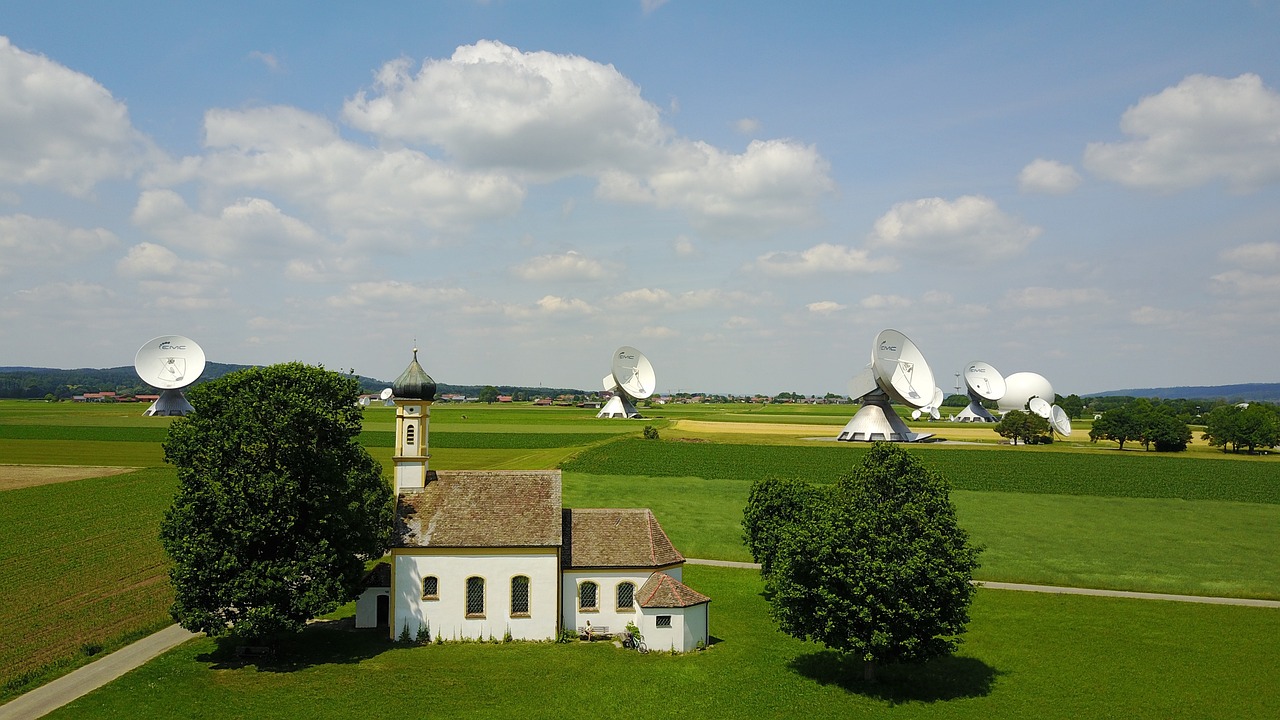
Satellite Imagery for Climate Studies
In the quest to understand our planet's climate, satellite imagery has emerged as an essential tool, akin to a bird's-eye view that provides comprehensive insights into Earth's complex systems. Imagine trying to piece together a massive jigsaw puzzle without knowing what the final picture looks like; that’s how scientists feel about climate studies without satellite data. These high-tech eyes in the sky capture detailed images and data that help researchers monitor changes in the environment, track weather patterns, and assess natural disasters.
One of the most significant advantages of satellite imagery is its ability to provide consistent and continuous observations over time. This allows scientists to identify trends and anomalies that might not be apparent from ground-based observations alone. For instance, satellites can detect changes in land use, deforestation rates, and even shifts in agricultural practices, offering a broader perspective on how human activities impact the climate.
Moreover, satellite data plays a crucial role in understanding climate change. By monitoring greenhouse gas emissions from space, scientists can analyze how these emissions contribute to global warming. The data collected can be used to create models that predict future climate scenarios, helping policymakers make informed decisions about environmental regulations and conservation efforts. For example, the NASA Earth Observing System provides valuable data that informs climate models and helps track the health of our planet.
Additionally, satellite imagery is instrumental in disaster response and management. When natural disasters strike—be it hurricanes, floods, or wildfires—satellites can quickly assess the extent of damage, enabling emergency services to respond more effectively. This rapid response can save lives and resources, showcasing the practical benefits of space exploration on Earth.
To illustrate the impact of satellite imagery on climate studies, consider the following table that highlights some of the key satellite missions and their contributions:
| Satellite Mission | Launch Year | Key Contributions |
|---|---|---|
| MODIS (Terra and Aqua) | 1999, 2002 | Monitoring land, ocean, and atmosphere; tracking wildfires and vegetation changes. |
| Sentinel-1 | 2014 | Radar imaging for land subsidence and flood monitoring. |
| GOES (Geostationary Operational Environmental Satellites) | 1975 - Present | Real-time weather monitoring and forecasting. |
| Landsat Series | 1972 - Present | Long-term land use and land cover change analysis. |
In summary, satellite imagery is not just a technological marvel; it is a vital component in the fight against climate change and a powerful ally in understanding our planet’s health. As we continue to enhance our satellite capabilities, the potential for more accurate climate predictions and effective environmental management grows exponentially. The insights gleaned from the cosmos are paving the way for a more sustainable future, reminding us that the sky is not the limit, but rather a gateway to understanding the intricate dance of life on Earth.
- How do satellites collect climate data? Satellites collect climate data using various sensors that capture images and measurements of the Earth's surface, atmosphere, and oceans.
- What are some examples of satellite missions? Notable missions include MODIS, Sentinel-1, and the Landsat series, each contributing unique data for climate studies.
- How does satellite imagery help in disaster response? Satellite imagery provides real-time assessments of disaster areas, allowing for quicker and more effective emergency response.
- Can satellite data predict future climate scenarios? Yes, satellite data is used to create predictive models that help scientists understand potential future climate conditions.
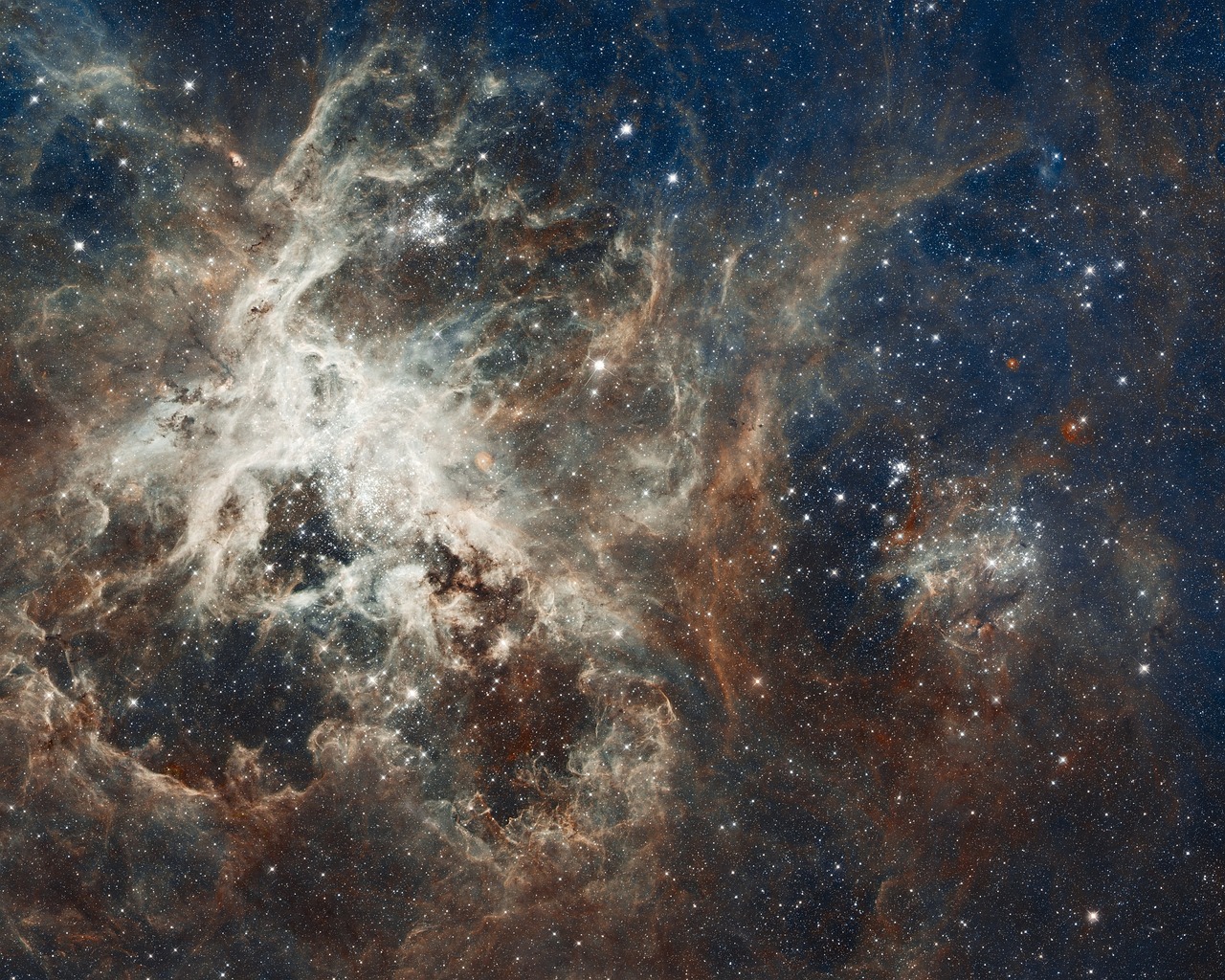
Geological Surveys from Space
When we think about geological surveys, we often picture geologists trudging through rugged terrains, taking samples, and analyzing rocks. However, the advent of space exploration has completely transformed this traditional approach. Today, harness the power of advanced satellite technology to provide comprehensive insights into the Earth's surface and its subsurface structures. This innovative method allows scientists to gather data from remote and inaccessible areas, making it easier to understand complex geological processes.
One of the most significant advancements in this field is the use of remote sensing technology. Satellites equipped with high-resolution imaging systems can capture detailed images of the Earth's surface, revealing features such as mountains, valleys, and even subtle changes in landforms over time. For instance, the NASA Landsat program, which has been operational since the 1970s, has provided invaluable data for monitoring land use changes, deforestation, and urban sprawl. The continuous stream of satellite imagery allows researchers to track geological changes with unprecedented accuracy.
Moreover, geological surveys conducted from space are not limited to just visual data. Satellites can also measure various physical properties of the Earth, such as gravitational variations and magnetic fields. This data is crucial for understanding the distribution of natural resources, assessing mineral deposits, and even predicting geological hazards like earthquakes and volcanic eruptions. For example, the GRACE (Gravity Recovery and Climate Experiment) mission has significantly advanced our understanding of groundwater depletion and ice sheet dynamics by measuring changes in the Earth's gravitational field.
The integration of geographic information systems (GIS) with satellite data has further enhanced our ability to analyze geological information. GIS allows researchers to visualize and interpret complex datasets, making it easier to identify patterns and correlations. This interdisciplinary approach not only aids in resource management but also plays a vital role in disaster preparedness and response efforts. For instance, by combining satellite imagery with GIS, scientists can create detailed hazard maps that help communities better prepare for natural disasters.
In summary, geological surveys from space have revolutionized our understanding of the Earth. By leveraging advanced satellite technology, scientists can gather comprehensive data that informs resource management, environmental monitoring, and disaster preparedness. As we continue to explore the cosmos, the knowledge gained from these surveys will undoubtedly play a critical role in addressing the challenges our planet faces today.
- What is remote sensing technology? Remote sensing technology involves collecting data from a distance, typically using satellites or aircraft, to monitor and analyze the Earth's surface and atmosphere.
- How do satellites contribute to geological surveys? Satellites provide high-resolution images and data about the Earth's surface, enabling scientists to study geological features and processes from a global perspective.
- What is GIS and how is it used in geological surveys? Geographic Information Systems (GIS) are tools that allow researchers to visualize, analyze, and interpret spatial data, enhancing the understanding of geological information gathered from satellites.

Interdisciplinary Collaborations in Space Research
When we think about space exploration, we often envision astronauts floating in zero gravity or high-tech rockets blasting off into the great unknown. However, there's a whole world of collaboration happening behind the scenes that is just as crucial to our understanding of the universe. Interdisciplinary collaborations in space research bring together experts from various fields, including engineering, biology, physics, and environmental science, to tackle complex challenges and push the boundaries of what we know.
These partnerships are not just about sharing resources; they are about merging different perspectives and expertise to create innovative solutions. For instance, when developing new spacecraft, engineers work side-by-side with scientists who specialize in human physiology to ensure that the environment is safe and conducive for astronauts. This kind of teamwork is essential because it allows for a holistic approach to problem-solving, ensuring that all aspects of a mission are considered.
One of the most exciting aspects of these collaborations is the way they foster knowledge sharing. Think of it like a potluck dinner where everyone brings their best dish to the table. Each discipline contributes its unique flavor, creating a richer and more diverse understanding of the challenges at hand. Whether it's developing new technologies for life support systems or studying the effects of microgravity on human health, the cross-pollination of ideas leads to groundbreaking discoveries.
Moreover, interdisciplinary collaborations often extend beyond national borders. Space exploration is a global endeavor, and international partnerships are becoming increasingly common. Agencies like NASA, ESA (European Space Agency), and CNSA (China National Space Administration) frequently join forces on projects, pooling their resources and expertise to achieve common goals. This global cooperation not only enhances scientific research but also promotes peace and understanding among nations.
To illustrate the impact of these collaborations, consider the following table that highlights some key partnerships and their contributions:
| Collaboration | Key Contributions |
|---|---|
| Nasa & ESA | Joint missions like the Mars Express and Hubble Space Telescope have revolutionized our understanding of space. |
| CNSA & Roscosmos | Collaborations on the Tiangong space station have advanced human spaceflight research. |
| International Space Station (ISS) | Brings together multiple countries to conduct scientific research in microgravity. |
In addition to formal partnerships, informal collaborations also play a significant role in space research. Scientists and engineers often attend conferences, workshops, and seminars where they can share their findings and brainstorm new ideas. These interactions can lead to unexpected breakthroughs and inspire new research directions.
Ultimately, the interdisciplinary nature of space research is what makes it so vibrant and dynamic. The challenges we face in exploring the cosmos are complex and multifaceted, requiring the combined efforts of many brilliant minds. As we continue to push the boundaries of our knowledge, these collaborations will be vital in ensuring that we not only reach for the stars but also understand the universe in which we live.
- What is interdisciplinary collaboration in space research?
It refers to the partnership between experts from different fields working together to solve complex problems related to space exploration. - Why are international partnerships important in space exploration?
They enhance scientific research, promote peace among nations, and pool resources for more effective problem-solving. - How does collaboration improve space missions?
By merging different perspectives and expertise, collaborations lead to innovative solutions and a more comprehensive understanding of challenges.

Partnerships Between Agencies and Institutions
When it comes to the vast and complex realm of space exploration, collaboration is key. Partnerships between various space agencies and research institutions around the globe have become the backbone of many successful missions. These collaborations not only enhance the sharing of knowledge but also pool resources, allowing for more ambitious projects than any single entity could undertake alone. Imagine a world where NASA teams up with the European Space Agency (ESA) or where universities collaborate with private companies like SpaceX. This is not just a dream; it’s happening right now!
One of the most notable examples of such partnerships is the International Space Station (ISS). This incredible feat of engineering and science is a joint venture involving five space agencies: NASA (United States), Roscosmos (Russia), ESA (Europe), JAXA (Japan), and CSA (Canada). Together, they have created a platform for groundbreaking research that benefits all of humanity. The ISS serves as a microgravity laboratory where scientists conduct experiments that would be impossible on Earth, from studying the effects of long-term space travel on the human body to developing new materials and medicines.
Moreover, these partnerships extend beyond just the agencies themselves. Collaborative efforts often include universities and research institutions, which help drive innovation and discovery. For instance, many universities are engaged in research projects that contribute to space missions. They develop cutting-edge technologies, conduct experiments, and analyze data that feed back into the mission objectives. This synergy between academia and space agencies fosters an environment ripe for innovation.
In addition to the scientific advancements, these partnerships also promote a sense of global unity. When countries come together to explore the cosmos, it sends a powerful message of cooperation and shared purpose. The challenges of space exploration are immense, and no single nation can tackle them alone. By working together, countries can share not only their expertise but also their cultural perspectives, enriching the scientific discourse and fostering international goodwill.
To illustrate the impact of these partnerships, consider the following table showcasing some significant collaborative missions:
| Mission | Agencies Involved | Year Launched | Key Objectives |
|---|---|---|---|
| International Space Station (ISS) | NASA, ESA, Roscosmos, JAXA, CSA | 1998 | Scientific research, international cooperation |
| Hubble Space Telescope | NASA, ESA | 1990 | Astrophysics, deep space observation |
| Mars Science Laboratory (Curiosity Rover) | NASA, various universities | 2011 | Investigate Mars' habitability |
In conclusion, partnerships between space agencies and institutions are not merely beneficial; they are essential for the advancement of space exploration. By combining resources, expertise, and perspectives, these collaborations pave the way for groundbreaking discoveries that push the boundaries of what we know. As we look to the future, it’s clear that the journey into space will continue to be a collective endeavor, inspiring future generations to reach for the stars.
- Why are partnerships important in space exploration?
Partnerships allow for resource sharing, knowledge exchange, and the ability to tackle larger, more complex missions that no single agency could handle alone. - What is the International Space Station?
The ISS is a collaborative project involving multiple space agencies that serves as a microgravity research laboratory, enabling scientific studies and international cooperation. - How do universities contribute to space missions?
Universities conduct research, develop technologies, and analyze data that support the objectives of space agencies, enhancing the overall mission outcomes.

Engagement with the Global Community
Space exploration is not just a national endeavor; it's a global enterprise that brings together scientists, engineers, and dreamers from all corners of the Earth. The collaborative spirit of space missions fosters an environment where countries set aside their differences and work towards a common goal: understanding the universe and our place within it. This engagement transcends borders, creating a tapestry of shared knowledge and resources that enriches scientific inquiry.
One of the most striking examples of this global cooperation is the International Space Station (ISS). Launched in 1998, the ISS serves as a laboratory, observatory, and factory in low Earth orbit, involving contributions from multiple space agencies, including NASA (United States), Roscosmos (Russia), ESA (European Space Agency), JAXA (Japan), and CSA (Canada). This collaborative project not only advances scientific research but also strengthens international relationships, showcasing how humanity can unite for the greater good.
Moreover, global partnerships extend to various scientific missions that aim to tackle pressing issues, such as climate change and resource management. For instance, the Copernicus Programme, spearheaded by the European Union, involves numerous countries and organizations working together to monitor the Earth's environment through satellite data. This initiative not only provides critical information for climate studies but also helps nations prepare for natural disasters, demonstrating the practical benefits of collaborative space research.
In addition to formal partnerships, engagement with the global community is also evident in the way knowledge is disseminated. Open-source data from space missions allows researchers worldwide to access valuable information, fostering innovation and creativity. Scientists can analyze data from missions like Kepler or Hubble to make groundbreaking discoveries about exoplanets or the structure of galaxies, regardless of their location. This democratization of information is a powerful tool for advancing scientific knowledge across the globe.
Furthermore, international conferences and workshops dedicated to space exploration encourage dialogue and collaboration among scientists. These gatherings serve as platforms for sharing ideas, discussing challenges, and showcasing new technologies. The exchange of perspectives not only enhances individual projects but also cultivates a sense of community among researchers, reinforcing the notion that we are all part of a larger quest for knowledge.
In conclusion, the engagement with the global community in space exploration is a testament to humanity's collective curiosity and determination. By working together, we can unravel the mysteries of the universe, address global challenges, and inspire future generations to reach for the stars. The journey of exploration is not just about discovering new worlds; it's about building a brighter future for all of us.
- What is the International Space Station (ISS)?
The ISS is a space station that serves as a microgravity research laboratory where scientific research is conducted in astrobiology, astronomy, meteorology, and other fields. - How does space exploration benefit Earth?
Space exploration leads to technological advancements, improves disaster response capabilities, and enhances our understanding of climate change and environmental monitoring. - What role do international partnerships play in space missions?
International partnerships facilitate knowledge sharing, resource pooling, and collaborative research efforts, driving advancements in science and technology.
Frequently Asked Questions
- What is the significance of space exploration in scientific knowledge?
Space exploration has profoundly impacted our understanding of various scientific disciplines. It has driven technological advancements, provided insights into biological processes, and deepened our knowledge of physics and the universe. By pushing the boundaries of what we know, space missions have led to innovations that benefit life on Earth.
- How has space exploration influenced technology?
Space exploration has been a catalyst for groundbreaking technologies. For instance, satellite technology has transformed communications, weather forecasting, and navigation systems. These advancements have trickled down to everyday applications, making our lives more efficient and connected.
- What role do satellites play in our daily lives?
Satellites are essential for numerous aspects of modern life. They enable Global Positioning Systems (GPS) that guide our travels, provide vital data for climate monitoring, and support communication networks. Without satellites, many of the conveniences we take for granted would not be possible.
- Can space research lead to medical advancements?
Absolutely! Research conducted in space has led to significant medical breakthroughs, particularly in understanding human health. For example, studies on the effects of microgravity have provided insights into muscle atrophy and bone density loss, leading to potential treatments for conditions on Earth.
- What discoveries have been made about the universe through space exploration?
Space exploration has unveiled many mysteries of the universe, including the existence of black holes, dark matter, and the formation of galaxies. Space-based telescopes have allowed scientists to observe phenomena that ground-based instruments simply cannot, enriching our understanding of the cosmos.
- How does space exploration contribute to Earth sciences?
Space exploration has significantly enhanced our understanding of Earth’s geological processes and climate patterns. Satellite imagery, for instance, is crucial for monitoring climate change and natural disasters, providing data that informs policy decisions and helps in disaster preparedness.
- What are the benefits of interdisciplinary collaborations in space research?
Interdisciplinary collaborations in space research foster innovation and comprehensive solutions to complex problems. By bringing together experts from various scientific fields, space missions can tackle challenges more effectively, leading to advancements that benefit multiple areas of study.
- How do international partnerships enhance space exploration?
International partnerships in space exploration promote cooperation and shared scientific goals. By pooling resources and knowledge, space agencies and research institutions can achieve more significant advancements and foster a sense of global community in the pursuit of scientific inquiry.

